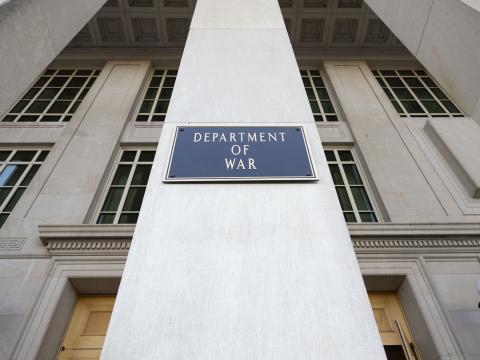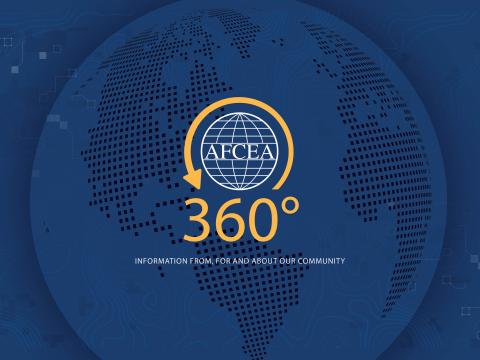Disruptive by Design: Online Voting Is the Future
The advent of cyberspace has opened up many possibilities and now paves the way for a long overdue change in the way voters elect officials. It is time to purge outdated voting methods and use cyber platforms, which can improve voter turnout and the nation’s confidence in returns.
The advent of cyberspace has opened up many possibilities and now paves the way for a long overdue change in the way voters elect officials. It is time to purge outdated voting methods and use cyber platforms, which can improve voter turnout and the nation’s confidence in returns.
Despite landmark constitutional changes that give the right to vote to most adults, U.S. voter turnout is notoriously low—embarrassingly so. In 2012, 53.6 percent of an estimated voting-age population of nearly 241 million people cast ballots in the U.S. presidential election, according to Pew Research Center.
When it comes to electing the president of the United States, voters cite a laundry list of excuses that keep them from the polls. Voting takes place during work hours; polling locations are inconvenient; lines are too long. Add to that list the fear of election fraud, as featured in the 2006 documentary Hacking Democracy, which exposed multiple methods used to alter votes. Then, there are recent problems with malfunctioning voting machines. In 2012, glitches with machines in several states, including Colorado, Georgia, Ohio, South Carolina and Virginia, caused voters to wait for hours in long lines.
Cyber voting is the next logical progression in election procedures to ensure—and increase—voter turnout. Instead of dedicating attention to hiring election workers and printing ballots, the government should focus on developing easy-to-understand graphics and user interfaces, creating stronger firewalls and establishing voter authenticity methods to secure the integrity of voting in the 21st century.
A vast majority of the nation’s voting population already is connected—especially millennials, noted for being polling station no-shows. Last year, 64 percent of U.S. adults owned a smartphone, an increase from 35 percent in 2011, according to Pew. The number of smartphone users jumped to 85 percent when tallied for young adults 18 to 29. People live their lives on their smartphones. Already, the average person looks at a smartphone 46 times every day, according to Time magazine. Voting via mobile devices is a rational next step in how Americans select their lawmakers.
But voting would not have to be limited to smartphones or other mobile devices. A vast majority of citizens has access to computers either at home, work or public venues such as libraries. In fact, the “offline population” is rapidly dwindling as the number of computers and devices grows. Today, 85 percent of U.S. residents possess both the technology and the access to be able to vote online, according to Pew.
Computers, tablets and even smartwatches all have the capability to permit a robust cyber-voting platform. But that’s not to say this method completely protects the integrity of elections. Risks always will exist, but surprisingly, threats associated with a cyber-based voting platform in the era of the Internet of Things can be minimized, resulting in potentially safer methods than those used today. Opponents of digital voting cite the high risk of tampering, a plausible concern as security is relegated to state and local officials. One vulnerability stems from the default administration password used throughout the life of most voting machines. It would be impossible to change the password for each machine, considering how infrequently the machines are used—likely no more than five times a year and rarely by the same election officials. Frequently changing passwords could lead to colossal hazards, including permanently forgetting passwords. One alternative is to write down passwords, but that too increases security vulnerabilities.
Another weakness, highlighted in Hacking Democracy, is that hackers can access some computerized voting machines and alter, without detection, recorded votes.
Proponents of digital voting are not blind to these threats and acknowledge the possibility of foreign nations, nonstate actors or hacktivist groups successfully tampering with election results. In 2012, the Russian government-funded TV network RT quoted Russian election chief Vladimir Churov calling the U.S. electoral system “among the worst in the world.” Churov noted that electronic voting machines do not provide voters with a receipt of their vote and are highly vulnerable to manipulation—one problem among several.
But precedence of secure use exists. Already, citizens share some of their most sensitive information online. Citizens can file their annual taxes and even register to vote using the Internet. The government communicates using cyber, a medium that led to the creation of the Department of Homeland Security’s National Cybersecurity and Communications Integration Center (NCCIC) to protect against cyberthreats. Industry strives to improve security mechanisms every day. Cyber voting would require increased proof of identity and authenticity of U.S. citizenship—opening the way for biometric technology uses or the development of highly secure login servers and private and public key encryption solutions.
Computers and cybersecurity policies already exist and are integrated into our lives. All we need to do is connect to the cyber realm and incorporate elections into the Internet of Things.
Cyber provides security and convenience, and we need to vote for that.
Senior Airman Ryan René Rosado, USAF, is an intelligence analyst. She also received the Distinguished Young AFCEAN award for 2015 and is a member of AFCEA’s Alamo chapter. The views expressed here are her own.




Comment
Cyber Voting
Excellent article!
Well written and thought
Well written and thought provoking. A concept whose time has come!
Online voting should not be implemented
The integrity of online voting cannot be guaranteed; it should not be implemented. Its surface similarity to e-commerce and to other online transactions is misleading.
Online voting has hurdles not found in e-commerce. Secret Ballot: An end-to-end transaction log to prove that a vote was cast as a specific voter intended would violate voting privacy. No Receipt: If a voter can prove to someone else how she cast her ballot, her vote can be coerced (think unions) or purchased. No Re-vote: If it is learned later that there was a problem, it is likely too late to fix the situation; no "refund" is possible. No Professional Security: Even Google has been hacked; a small community has little chance against a determined attacker. Verification Separate from Actor: Without knowing how each person voted, it must be possible to confirm that all votes were cast once by authorized individuals in the manner that they intended, and that they were counted correctly.
Online voting also has problems in common with e-commerce. Denial of service attacks are similar to what used to happen when not enough high-tech voting booths were provided to a precinct. (A single scanner to tally paper votes solves this problem today.) Lack of third-party verification of software means the program has a high-probability of being faulty or malicious. (Multiple officials at a polling place check each other to verify that a voter is authorized and that ballot boxes are not stuffed.) Software testing cannot prove the absence of a back door. Consider the recent Volkswagon scandal where emission settings were automatically modified when the vehicle was connected to a shop tester. Malware can make individuals think they're connected to a valid site when they are not, and millions of personal computers are already part of botnets that can deliver updated instructions to them on a timely basis. And unlike polling places, online polling sites can be attacked from anywhere. And, there is a reluctance to admit that a software project has failed. Trials of online voting have been touted as successful without any process to confirm that the voting integrity was indeed maintained and can be verified. Indeed, some officials who have been notified of a discrepancy with their electronic voting system midstream have simply continued with the vote as if no problem had been found.
For an introduction to the undesirability of online voting, see "Internet Voting in the U.S. (Oct 2012), "Computer Security and the Risks of Online Voting" (Jul 2015), and "The Risks of Self-Auditing Systems" (Jun 2016) in Communications of the ACM.
Disagree
Mr. Ladner, Sir why do you think that the current voting system is to be trusted? Paper, tally and people counting them leads easily to both human error or intentional abuse to the system. Electronic votes ensure that you can have a third party software as a back up to ensure authenticity. E-commerce may have opened doors for vulnerabilities, but its just as vulnerable as if you lost your wallet or someone stole it and it had cash in it. I would encourage you to also consider that while you believe the system now is not faulty or vulnerable, it still results in extremely low voter turnout. Is high voter turnout and a more active population with easier access to voting not worth the risk? Furthermore, you are commenting on AFCEA International page, do you really doubt that all the private organizations and government entities are not able to produce, test, and ensure a functioning and authentic vote?
Comments